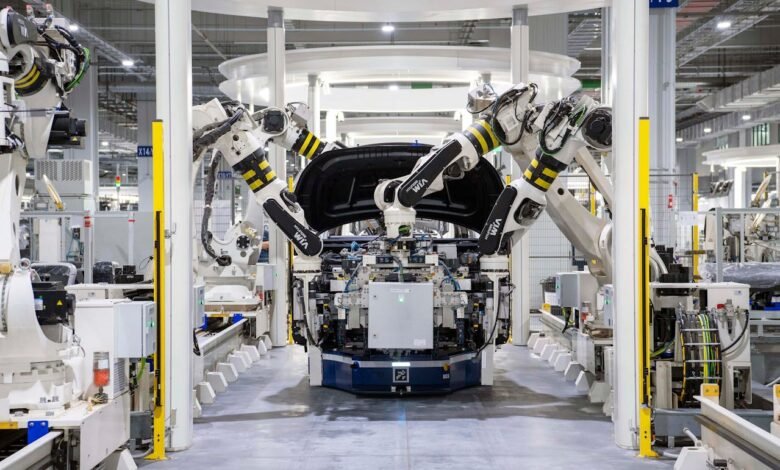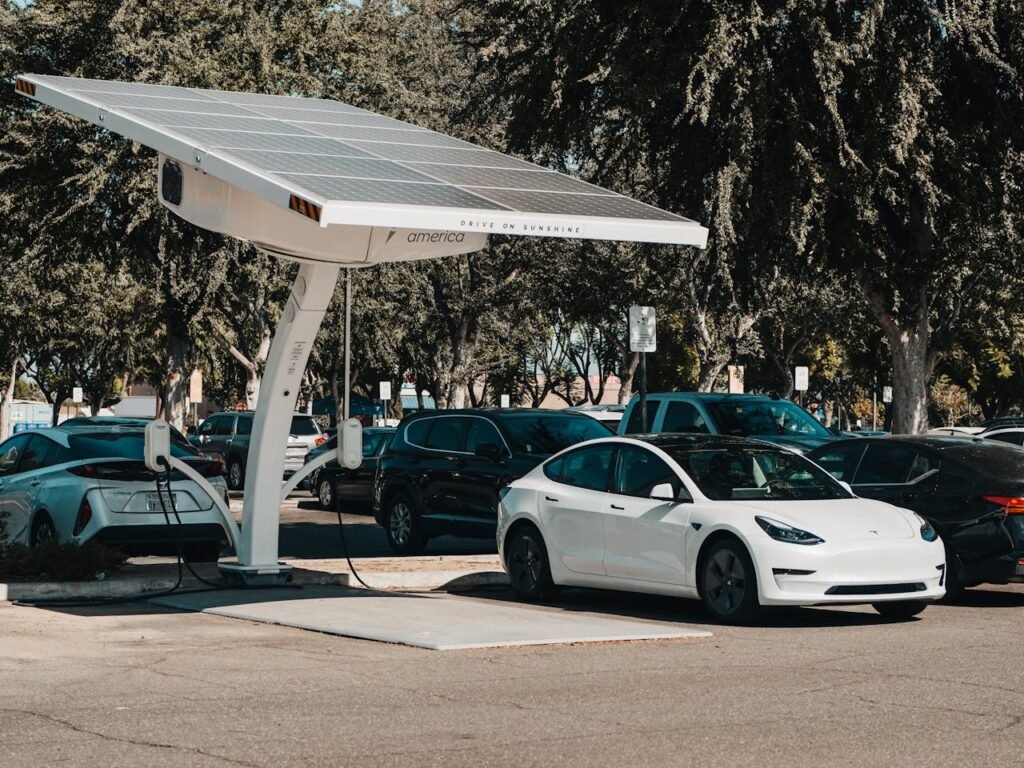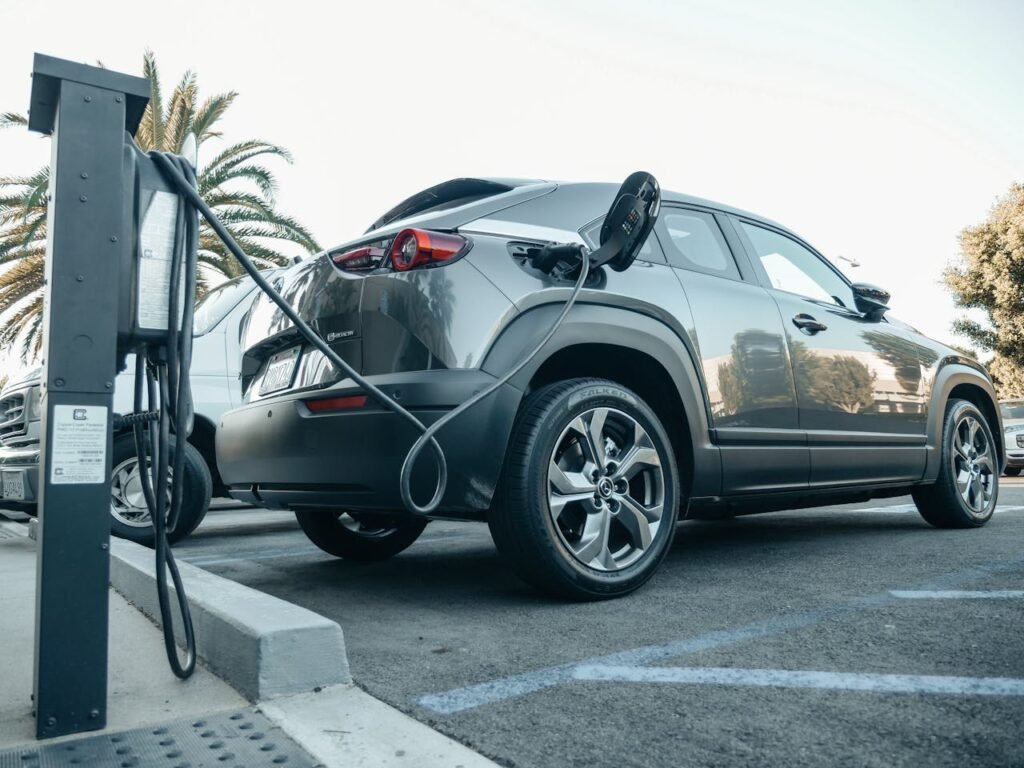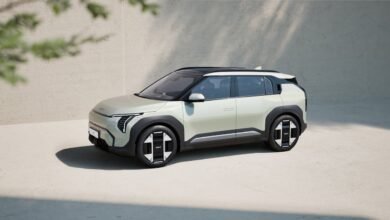The Electric Vehicle Revolution in India: A Comprehensive Analysis

The Indian automotive landscape is undergoing a dramatic transformation, with electric vehicles (EVs) at the forefront of this change. As of 2025, the EV market in India has experienced unprecedented growth, marking a significant shift in consumer preferences and government policies. This article delves into the current state of the EV industry in India, exploring the factors driving its rapid expansion, the key players shaping the market, and the challenges and opportunities that lie ahead.
The Surge in EV Adoption
The adoption of electric vehicles in India has seen a remarkable upswing in recent years. According to Inc42’s India’s Electric Vehicle Startup Landscape Report, 2025, the number of registered EVs across all segments has increased tenfold over the past five years1. This exponential growth is a testament to the changing attitudes towards sustainable transportation and the increasing viability of electric vehicles as a practical alternative to traditional internal combustion engine (ICE) vehicles.
Segment-wise Growth
The EV market in India can be broadly categorized into three main segments: electric two-wheelers (E2W), electric three-wheelers (E3W), and electric four-wheelers (E4W) or electric cars. Each of these segments has shown significant growth, but with varying degrees of adoption and market penetration.
Electric Two-Wheelers (E2W)
Leading the charge in EV adoption are electric two-wheelers. In 2024, a staggering 60% of all newly registered EVs were two-wheelers, with approximately 11.4 lakh fresh units entering the vehicle registry1. This dominance can be attributed to several factors:
- Affordability: E2Ws are generally more cost-effective than their four-wheeler counterparts, making them accessible to a larger segment of the population.
- Urban Mobility: In congested Indian cities, two-wheelers offer greater maneuverability and ease of parking.
- Lower Running Costs: The operational costs of E2Ws are significantly lower than traditional petrol-powered scooters and motorcycles.
- Government Incentives: Various state and central government schemes have made E2Ws more attractive to consumers.
Electric Four-Wheelers (E4W)
While E2Ws lead in terms of volume, the E4W segment has shown the highest growth rate in adoption. Electric cars have seen a surge in popularity, with Tata Motors emerging as the dominant player in this category1. The growth in this segment can be attributed to:
- Increased Model Variety: More automakers are introducing electric car models, giving consumers a wider range of options.
- Improved Infrastructure: The expansion of charging networks has made electric cars more practical for daily use.
- Corporate Adoption: Many companies are transitioning their fleets to electric vehicles, boosting sales in this segment.
- Luxury Market Entry: Premium and luxury car manufacturers have entered the EV space, attracting high-end consumers.
Electric Three-Wheelers (E3W)
The E3W segment, which includes electric rickshaws and cargo vehicles, has also seen significant growth. This segment plays a crucial role in last-mile connectivity and goods transportation in urban and semi-urban areas. The adoption of E3Ws has been driven by:
- Lower Operating Costs: E3Ws offer substantial savings on fuel and maintenance compared to their ICE counterparts.
- Government Push: Many local governments have incentivized the adoption of electric three-wheelers to reduce urban pollution.
- Ease of Charging: The smaller battery size of E3Ws makes them easier to charge, even in areas with limited charging infrastructure.

Key Players in the Indian EV Market
The rapid growth of the EV market in India has attracted a diverse range of players, from established automotive giants to innovative startups. This section examines the major contributors to India’s EV revolution.
Tata Motors: The Electric Car Pioneer
Tata Motors has emerged as the undisputed leader in the electric car segment in India. The company’s success can be attributed to several factors:
- Early Market Entry: Tata Motors was one of the first major automakers to invest heavily in EV technology for the Indian market.
- Diverse Product Portfolio: The company offers a range of electric vehicles catering to different price points and consumer needs.
- Strong Brand Recognition: Tata’s reputation as a trusted Indian brand has helped in gaining consumer confidence.
- Robust Distribution Network: Leveraging its existing dealership network has given Tata an edge in reaching customers across the country.
Tata Motors’ flagship electric vehicles, such as the Nexon EV and Tigor EV, have become synonymous with affordable electric mobility in India. The company’s commitment to expanding its EV lineup and improving technology has solidified its position as the market leader.
Two-Wheeler Manufacturers
The E2W segment has seen intense competition, with both established players and new entrants vying for market share. Some of the key players in this segment include:
- Ola Electric: The ride-hailing giant’s foray into electric scooters has disrupted the market with its high-performance and feature-rich offerings.
- Ather Energy: Known for its premium electric scooters with advanced technology and connectivity features.
- Hero Electric: Leveraging the brand recognition of Hero MotoCorp, the company has a strong presence in the affordable E2W segment.
- TVS Motor Company: The traditional two-wheeler manufacturer has made significant strides in the electric space with models like the iQube.
These companies have been instrumental in driving innovation in the E2W segment, introducing features like long-range batteries, fast charging capabilities, and smart connectivity options.
Emerging Players and Startups
The EV revolution has also given rise to numerous startups and new entrants in the automotive space. These companies are focusing on various aspects of the EV ecosystem, including:
- Battery Technology: Startups working on improving battery efficiency, reducing costs, and developing innovative charging solutions.
- Charging Infrastructure: Companies dedicated to expanding the network of charging stations across the country.
- Electric Vehicle Components: Manufacturers specializing in motors, controllers, and other critical EV components.
- Software and Connectivity: Firms developing advanced software solutions for vehicle management, route optimization, and user experience enhancement.
The influx of these new players has not only accelerated innovation but also created a more competitive and dynamic EV market in India.
Factors Driving EV Growth in India
The exponential growth of the EV market in India can be attributed to a combination of factors, ranging from government initiatives to changing consumer preferences.
Government Policies and Incentives
The Indian government has played a crucial role in promoting EV adoption through various policies and incentives:
- FAME II Scheme: The Faster Adoption and Manufacturing of (Hybrid &) Electric Vehicles in India (FAME II) scheme provides subsidies for EV purchases and supports the development of charging infrastructure.
- Production Linked Incentive (PLI) Scheme: This initiative encourages domestic manufacturing of EVs and their components, reducing dependency on imports and lowering costs.
- State-level Incentives: Many Indian states have introduced additional incentives, including road tax exemptions and subsidies, to promote EV adoption.
- Emission Norms: Stricter emission standards for ICE vehicles have indirectly boosted the attractiveness of EVs.
These government initiatives have created a favorable environment for both EV manufacturers and consumers, accelerating the transition to electric mobility.
Technological Advancements
Rapid advancements in EV technology have addressed many of the initial concerns associated with electric vehicles:
- Improved Battery Technology: Increases in energy density and reductions in battery costs have led to EVs with longer ranges and more affordable price points.
- Fast Charging Solutions: The development of fast-charging technologies has significantly reduced charging times, making EVs more practical for everyday use.
- Enhanced Performance: Modern EVs offer performance comparable to or better than their ICE counterparts, dispelling myths about electric vehicles being underpowered.
- Smart Features: Integration of advanced connectivity and autonomous features has made EVs more appealing to tech-savvy consumers.
These technological improvements have not only enhanced the capabilities of EVs but have also helped in changing consumer perceptions about electric mobility.
Economic Factors
The economic benefits of EVs have become increasingly apparent to Indian consumers:
- Lower Running Costs: The cost per kilometer for EVs is significantly lower than for ICE vehicles, especially given the rising fuel prices in India.
- Reduced Maintenance: EVs have fewer moving parts compared to ICE vehicles, resulting in lower maintenance costs over the vehicle’s lifetime.
- Competitive Pricing: With government subsidies and falling battery costs, the initial purchase price of EVs has become more competitive with traditional vehicles.
- Potential for Vehicle-to-Grid (V2G) Technology: The future possibility of EVs contributing to the power grid could offer additional economic benefits to owners.
As the total cost of ownership for EVs continues to decrease, more consumers are finding them to be economically viable alternatives to conventional vehicles.
Environmental Awareness
Increasing awareness about climate change and air pollution has led to a shift in consumer preferences towards more sustainable transportation options:
- Urban Air Quality: The visible impact of vehicular emissions on urban air quality has made consumers more receptive to zero-emission vehicles.
- Corporate Sustainability Goals: Many companies are adopting EVs as part of their sustainability initiatives, influencing employee and customer perceptions.
- Global Climate Commitments: India’s international commitments to reduce carbon emissions have trickled down to influence individual consumer choices.
- Social Responsibility: Owning an EV is increasingly seen as a statement of social responsibility and environmental consciousness.
This growing environmental awareness has created a positive sentiment towards EVs, contributing to their increased adoption.
Challenges and Opportunities
Despite the rapid growth, the EV market in India still faces several challenges that need to be addressed to sustain and accelerate this momentum.
Infrastructure Development
The lack of adequate charging infrastructure remains a significant barrier to widespread EV adoption:
- Charging Station Network: While the number of public charging stations has increased, it is still insufficient to support mass EV adoption, especially in smaller cities and rural areas.
- Grid Capacity: The power grid in many parts of India needs upgrading to handle the increased load from EV charging.
- Standardization: The absence of uniform charging standards across different EV models complicates infrastructure development.
- Home Charging Solutions: Many urban residents lack access to dedicated parking spaces, making home charging difficult.
Addressing these infrastructure challenges presents significant opportunities for businesses and could lead to job creation in installation, maintenance, and related services.
Battery Technology and Manufacturing
While battery technology has improved, several challenges remain:
- Raw Material Dependency: India is heavily dependent on imports for key battery materials like lithium, cobalt, and nickel.
- Recycling Infrastructure: The lack of a robust battery recycling ecosystem poses environmental challenges and misses opportunities for resource recovery.
- Thermal Management: India’s hot climate presents challenges for battery life and performance, necessitating advanced thermal management solutions.
- Manufacturing Capacity: Scaling up domestic battery manufacturing capabilities is crucial for reducing costs and ensuring supply chain resilience.
These challenges also present opportunities for innovation in battery technology, development of alternative materials, and establishment of a circular economy for EV batteries.
Policy and Regulatory Framework
While government policies have been supportive, there is room for improvement:
- Long-term Policy Stability: The EV industry needs clear, long-term policies to encourage sustained investment and planning.
- Coordination Between Central and State Policies: Better alignment between central and state-level EV policies could create a more uniform and predictable market environment.
- End-of-Life Vehicle Policies: Developing comprehensive policies for the disposal and recycling of EVs and their components is crucial for long-term sustainability.
- Skill Development: Policies to promote skill development in EV manufacturing, maintenance, and related fields are essential to support the growing industry.
Addressing these policy challenges could create a more robust and sustainable EV ecosystem in India.
Consumer Awareness and Acceptance
While EV adoption is growing, misconceptions and lack of awareness still persist:
- Range Anxiety: Many consumers still have concerns about the driving range of EVs, despite improvements in battery technology.
- Upfront Costs: The higher initial cost of EVs compared to equivalent ICE vehicles remains a barrier for some consumers.
- Charging Time: The time required to charge EVs, especially in comparison to refueling ICE vehicles, is a concern for potential buyers.
- Limited Model Options: The range of EV models available in India, particularly in the mid-range segment, is still limited compared to ICE vehicles.
Overcoming these challenges through education, marketing, and product development presents opportunities for EV manufacturers and related businesses.

The Road Ahead: Future Prospects for EVs in India
As the EV market in India continues to evolve, several trends and developments are likely to shape its future:
Technological Innovations
- Solid-State Batteries: The development of solid-state batteries could revolutionize EV technology, offering higher energy density, faster charging, and improved safety.
- Wireless Charging: The integration of wireless charging technology in roads and parking spaces could address range anxiety and charging convenience issues.
- Vehicle-to-Grid (V2G) Technology: Implementing V2G capabilities could turn EVs into mobile power banks, contributing to grid stability and offering additional value to owners.
- Autonomous Driving: The convergence of electric and autonomous vehicle technologies could reshape urban mobility and transportation systems.
Market Expansion and Diversification
- Entry of Global Players: More international EV manufacturers are likely to enter the Indian market, increasing competition and consumer choice.
- Expansion into New Segments: The EV revolution is expected to expand into commercial vehicles, including buses and trucks, opening new market opportunities.
- Battery Swapping: The adoption of battery swapping technology, especially for commercial vehicles and two-wheelers, could address charging time concerns and reduce upfront vehicle costs.
- Localization of Supply Chain: Increased focus on localizing the EV supply chain will likely reduce costs and boost the domestic manufacturing ecosystem.
Policy and Regulatory Evolution
- Stricter Emission Norms: Further tightening of emission standards for ICE vehicles is likely to accelerate the shift towards EVs.
- Green Zones in Cities: The implementation of low or zero-emission zones in major cities could boost EV adoption in urban areas.
- Incentives for Charging Infrastructure: More targeted incentives for the development of charging infrastructure, including mandates for new buildings, are expected.
- Battery Recycling Regulations: The introduction of comprehensive regulations for battery recycling and second-life applications will be crucial for long-term sustainability.
Economic and Social Impact
- Job Creation: The growth of the EV industry is expected to create new job opportunities across manufacturing, services, and related sectors.
- Reduction in Oil Imports: Widespread EV adoption could significantly reduce India’s oil import bill, improving the country’s energy security and economic stability.
- Improved Air Quality: The shift to EVs, particularly in urban areas, is likely to lead to noticeable improvements in air quality and associated health benefits.
- New Business Models: The EV ecosystem is expected to give rise to innovative business models in areas such as battery leasing, EV fleet management, and energy services.
Conclusion
The electric vehicle market in India stands at a pivotal juncture. The remarkable growth witnessed in recent years, particularly the doubling of EV car sales and the dominance of players like Tata Motors, signals a transformative shift in the country’s automotive landscape. This growth is not just a trend but a fundamental change in how India approaches transportation and energy consumption.
The challenges ahead are significant, ranging from infrastructure development to technological advancements and policy refinements. However, these challenges also present immense opportunities for innovation, economic growth, and environmental improvement. The continued collaboration between government, industry, and consumers will be crucial in navigating these challenges and realizing the full potential of electric mobility in India.
As India progresses on this electric journey, the impact will extend far beyond the automotive sector. It has the potential to reshape urban planning, energy systems, and even social behaviors. The success of the EV revolution in India could serve as a model for other developing countries, demonstrating how large-scale adoption of sustainable technologies can be achieved in diverse and complex markets.
The road ahead for electric vehicles in India is charged with potential, promising a future where clean, efficient, and innovative mobility solutions become the norm rather than the exception. As the market continues to evolve, it will be fascinating to watch how India’s EV story unfolds, potentially setting new benchmarks in the global transition to sustainable transportation.



